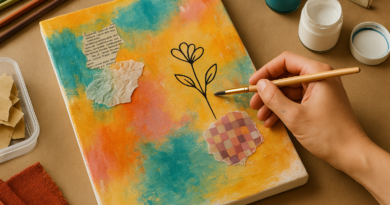The Beauty of Calligraphy: Modern Techniques and Creative Applications
The beauty of calligraphy has captivated people throughout history, transcending cultures and generations. Once a necessity for formal writing, today calligraphy has become an art form, a personal expression, and even a therapeutic activity. The harmony between letters, spaces, and strokes provides a unique visual experience, transforming words into true masterpieces.
Nowadays, modern techniques have introduced new approaches to calligraphy, blending classical elements with digital tools and innovative materials. Learning this art has become more accessible thanks to online courses and video tutorials, allowing anyone to develop their own calligraphic identity. The use of brush pens, watercolor inks, and specialized software expands creative possibilities and facilitates practice for both beginners and professionals.
Beyond its beauty, calligraphy has creative applications that extend far beyond traditional writing. Whether in event decoration, the design of invitations and posters, or even the customization of handmade products, this technique adds a sophisticated and exclusive touch to each piece. With creativity and dedication, it is possible to explore numerous ways to transform letters into art. Additionally, calligraphy is increasingly used in branding projects, where a brand’s visual identity can stand out through carefully crafted lettering. This technique is also highly valued in the world of personalized stationery, where invitations, notebooks, and packaging gain a special charm with unique and elegant strokes.
Main Modern Calligraphy Techniques
With the evolution of tools and materials, different approaches to practicing calligraphy have emerged. Some of the main techniques include:
- Brush pen calligraphy: Uses pens with brush tips, allowing for fluid and expressive strokes. It is one of the most popular techniques today.
- Lettering: Although often confused with calligraphy, lettering is more focused on the illustration of letters, being drawn rather than written.
- Digital calligraphy: Done on tablets and specialized software, such as Procreate and Adobe Illustrator, allowing for precise editing and infinite creative possibilities.
- Classic calligraphy: Traditional techniques such as Copperplate and Spencerian continue to be valued for their sophistication and precision in strokes.
Applying Calligraphy in Daily Life
Calligraphy can be incorporated into various everyday activities, adding charm and personality. Some ways to apply it include:
- Diaries and bullet journals: Creating personalized titles and decorations to make notes more visually appealing.
- Invitations and greeting cards: Customizing wedding invitations, birthday cards, or congratulatory messages with elegant writing.
- Interior decoration: Designing framed artworks and decorative murals with hand-written inspirational quotes.
- Fashion and accessories: Many brands have used calligraphy to create exclusive prints on clothing, bags, and other personalized items.
Step-by-Step Guide for Beginners
If you want to start practicing calligraphy, follow this basic guide:
- Choose the right materials: Invest in proper pens, high-quality paper, and, if possible, practice workbooks.
- Learn basic strokes: Begin by practicing simple strokes, such as thin and thick lines, to develop hand control.
- Study different lettering styles: Explore various fonts and types of calligraphy to find the one that suits you best.
- Practice daily: Consistency is essential for improving skills and developing a personal style.
- Create your own projects: Experiment with applying calligraphy to cards, framed artwork, and even small stationery businesses.
The beauty of calligraphy is within reach for anyone who wants to explore this captivating art form. Whether as a hobby, profession, or simple means of expression, handwriting continues to enchant and inspire. With dedication and patience, anyone can master modern techniques and apply this knowledge creatively in various situations. Constant practice and a desire to innovate are the main allies for those who wish to transform calligraphy into a true form of art and communication.



